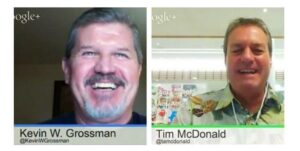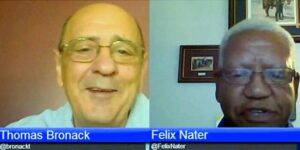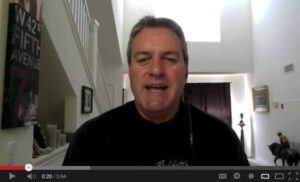
We’re Turning Three! Let’s Celebrate Community #TChat Preview
Can you believe #TChat has been going strong for three years? Time flies on the stream! Let’s talk about the future of social learning and your thoughts on community

Can you believe #TChat has been going strong for three years? Time flies on the stream! Let’s talk about the future of social learning and your thoughts on community

We’re excited to transform organizational cultures — hand-in-hand with a dynamic leader in workforce engagement! Learn more about our partnership…

What does it mean to be “ready” for workplace violence or disaster? Even after a massive wake-up call on 9/11/2001, many of us aren’t fully prepared. What should we know?

Ask a community like ours a question, and stand back. You’re guaranteed to get answers you never expected. A lesson in the beauty of crowdsourcing…

With all the expert advice, tools and “thought leaders” available to us these days, who and what is making the biggest difference in your life? Let’s learn from one another!

Twitter. For recruiters, it’s now a hot spot — not only for talent acquisition, but also for professional development. Who’s leading this social learning movement?

In a week devoted to workplace recognition, our community discovered an abundance of ways to express appreciation. But above all, be sure to make it meaningful.

Today’s educational system falls far short of the mark in developing tomorrow’s leaders. What can talent-minded professionals do to bridge the gap? Social learning advocate, Angela Maiers, knows…

It’s official! TalentCulture is partnering with Achievers to expand and enhance the “world of work” mission. What does this mean for talent-minded professionals everywhere?

How can business apply social tools and techniques to connect with those in need – around the corner or around the world? Our community exchanges ideas with experts on “social good” in the workplace…

Community — that word means so much more to me today than it did only one week ago. Some takeaways I won’t forget from the Boston bomb attack…

Social media seems like the perfect way to foster relationships between business and non-profit organizations. But results are mixed. What’s missing? How can companies benefit from helping?
What’s the recipe for more creative, satisfying solutions to challenges in life and in business? Try a dash of collaboration…
#TChat Teaser Video: Take look at how Jamie defines brand humanization, and explains why it’s important for everyone to understand this concept…
How can you stay ahead of the curve in today’s job environment? After a week of TalentCulture community discussion, I’m reminded that the key is not how fast or how elegantly your career moves forward – it’s how many others you bring along for the ride.
On the 2-year anniversary of TalentCulture’s #TChat weekly Twitter Chat events, we looked back at the meaning of social and collaborative learning, and considered the road ahead….
In the middle of winter there’s a warm huddle coming to New England. It’s the Boston leg in a series of red-hot “un-conferences” for HR professionals – called SocialHR Camp. A dynamic, flexible, collaborative knowledge-sharing environment – designed for HR pros who want to leverage social media in their workplace environments and in their careers. Sounds very cool.
On the second anniversary of #TChat, the TalentCulture community celebrates the spirit of collaboration, social learning and organizational growth with inspiring thoughts from some of our most faithful participants.
People have very strong feelings about the definition of “community” in a social business context. And this week in the World of Work, we’ll dig even deeper into the differences and similarities among talent communities, social communities, and other communities supported by digital channels…
Once I dipped my toe into the Twitter pool, I knew there was no turning back. And now here I am one year later, writing the recap for the very chat that indoctrinated me into the social world of work…
The Fact of the Matter Every community develops their own definition of what matters. For some communities, it’s motivated by a shared interest or a
Emotional intelligence. How does it factor into today’s world of work? Here’s what the TalentCulture community had to say in the very first #TChat Twitter chat session…
Crowdsourcing is using an open call for tasks, information or data collection mostly through new media technology. Many times, a passionate crowd is much more powerful than an individual, business or closed community.